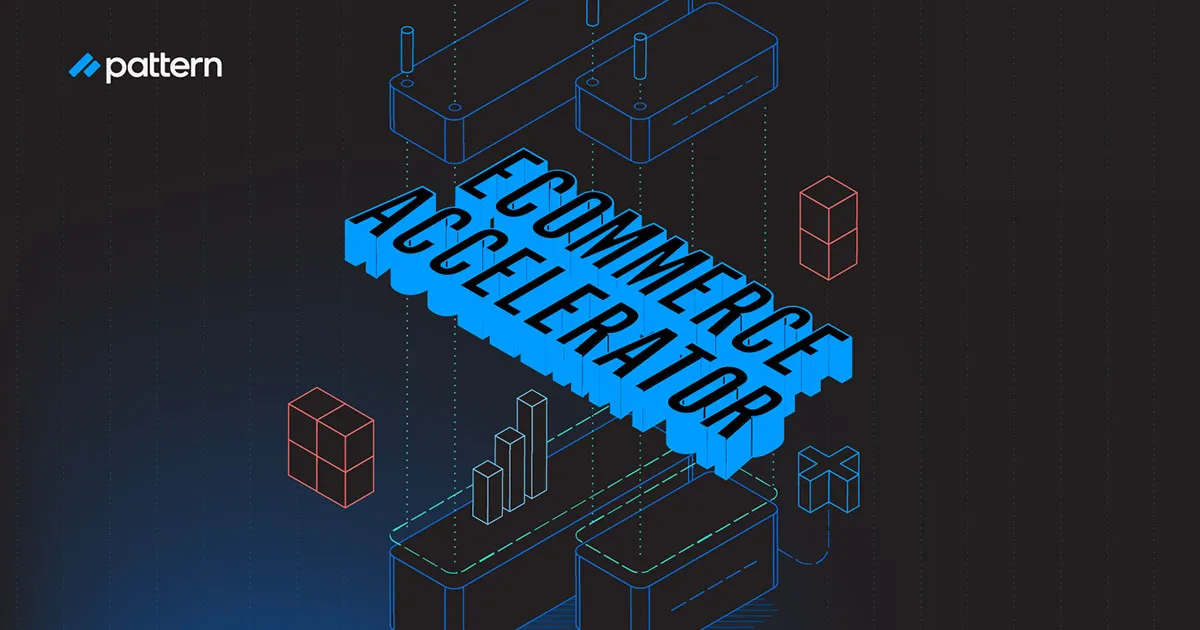Ecommerce Accelerators: The Single Way Brands Achieve Ecommerce Success

Ecommerce is an exploding $6 trillion dollar market, and if you’re trying to grow your ecommerce business, you’ve probably heard about ecommerce accelerators—but what do they do for brands? And how do they differ from other ecommerce service providers, agencies, aggregators, technology companies, etc...? The business model is simple—ecommerce accelerators partner with brands to buy their inventory and ultimately provide a different approach to sustained brand growth.
Accelerators help brands seize new opportunities (aka accelerate revenue growth) and optimize for revenue growth by providing their omnichannel expertise, resources, and technology to execute data-driven strategies across marketplaces like Amazon, Tmall, JD.com, and beyond. As a premier global ecommerce accelerator, Pattern partners with brands to provide the resources, technology, data, and brand control to drive profitable growth across ecommerce.
Accelerators are Game Changers, Not Service Providers
Accelerators are changing the ecommerce game by digging deeper into and relying more heavily on data, going beyond just sales reports and spreadsheets, to understand consumer behavior, marketplace algorithms, and effective processes. As marketplaces update their ranking algorithms and advertising platforms adjust their bidding rules, the AI-powered technology serving many ecommerce accelerator platforms will adapt quickly. And since the accelerator manages all aspects of the ecommerce experience, a brand's tech stack will remain synced and fully integrated.
While brands can achieve acceleration on their own, the typical ecommerce team is small, under-resourced and lacks access to leading technology to achieve profitable scale. As a leading ecommerce accelerator, Pattern helps brands fill in their resource gaps, identify patterns in their data, and unleash profitable growth. Using our proprietary data suite, experience, and global reach, Pattern becomes an extension of your ecommerce team, supporting every aspect of your marketplace business from on-page imagery to warehousing logistics.
Accelerators Will Give More than They Take
One of the biggest differentiators in the industry, is, unlike any other brand partner, ecommerce accelerators buy a brand’s inventory–fully and financially investing in the brand and its success. Much like ecommerce agencies, accelerators support brands by driving traffic and conversions through proficiencies in advertising, SEO, content, design, and more. But accelerators go a step further to support supply chain logistics, increase brand control, and provide proprietary data—all with one partner.
And unlike ecommerce aggregators, who purchase brands in order to grow them, accelerators work in collaboration with the brand, supporting growth in exchange for a share of profits. Because of this, accelerators are highly-motivated to help you succeed, and work with your brand to determine and maximize customer lifetime value, but still give you full power of your brand strategy and decisions. Because of their scale, ecommerce accelerators can help you identify and capitalize on new opportunities for your brand, such as identifying product innovations, bundles, and shipping synergies, coaching you every step of the way.
Pattern Exponentially Grows Brands
Pattern partners with your brand and focuses on long-term growth on ecommerce and across marketplaces. We provide the resources and technology to maintain price control, analyze and scale to new marketplace opportunities, and optimize for omnichannel traffic, sales, and revenue. We help you get on, and stay on, the Profitability Flywheel. Want to learn more about accelerating your brand? Schedule a meeting today.




.webp)

